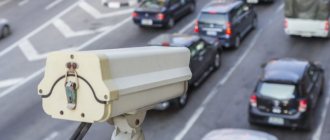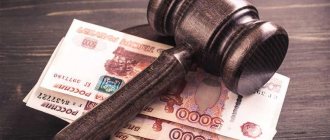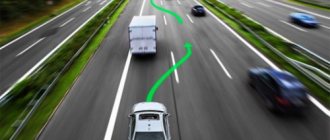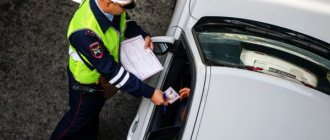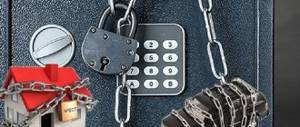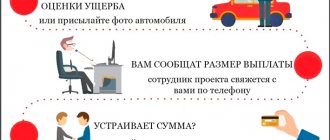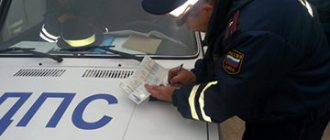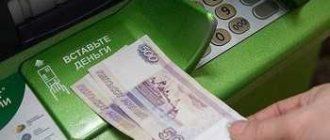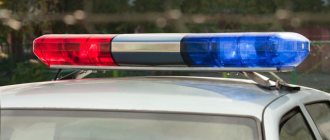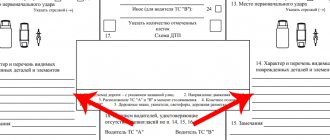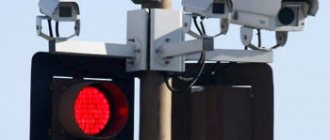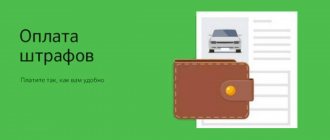Reconciliation of credentials.
Check the credentials for which the fine was issued:
- car number and registration certificate number - if the fine was issued by automatic means of recording violations
- driver's license number - if the fine was issued by a traffic police officer.
How to check.
On many websites this information is indicated along with the fine. For example, on our website, this information looks like this:
If there is no such information on your website, you can always double-check the information about the fine on our website. To do this, you need to use the search for fines by resolution number
What to do if the specified data does not belong to me or my car.
Most likely, you made a mistake when you entered data on the site for the first time, based on the experience of our service, 99% of all such cases occur because of this. In the remaining cases, there may be a problem on the site or another reason.
What to do:
Check on the website what car or driver information you have provided and if you have provided incorrect information, correct it or write to the site administration.
The fine itself can be hidden, since it is not your fine.
PREVENTIVE MEASURES
According to the law, the purchase and sale of a vehicle occurs in a simplified manner. The entire transaction procedure can be carried out through a notary.
“Re-registration is the responsibility of the new owner,” notes Anna Utkina. – If he has not done this within 10 days, then fines will be sent to the previous owner.
In this case, experts recommend contacting the buyer of the car and convincing him to resolve the issue. Otherwise, the contract can be cancelled.
“However, it is safer to contact the traffic police yourself and deregister the car before selling it - these are preventive measures that should be taken in order not to receive fines,” the interlocutor concluded.
The former owner of the car is released from liability if, during the consideration of the complaint, it is proven that at the time of the offense the car belonged to another person.
What to do, if:
- photographs and reality clearly do not match.
- It is impossible to identify license plates from photographs
- the speed recorded by the camera exceeds the technical capabilities of the vehicle.
- in the area where the violation was recorded, no prohibitory sign was installed or its effect ended before the place where the car was filmed
- the car owner was not driving at the time of the violation
- for one violation, filmed by one camera, several orders were issued
In such cases, you need to appeal the fine. Details about the appeal process are described here. How to appeal a traffic police fine. https://www.driver-helper.ru/shtrafy-gibdd/appeal
If there is no photo?
If there is no photograph of the violation, and this sometimes happens, you have 2 options:
- All registration data of the car are the same, in the place and time when the violation was committed, you were and violated - you can pay the fine, the absence of a photo is not a reason not to pay the fine.
- If you don’t remember whether you were at the place of the violation or are not sure that you violated the traffic rules, you need to apply to the traffic police department or another structure that issued the fine with a request to provide photographic materials confirming the fact that you violated the traffic rules. The name of the department is always indicated in the fine details.
Can I just ignore it?
If you disagree with the traffic police fine you received and miss the period for appeal, you won’t be able to simply forget about it. After 10 days, it will be considered that the driver has agreed with the penalty received. After this, another 60 days are given to pay it.
Even if the resolution came in the form of a “chain letter” and its recipient did not show up to receive it, it will be sent back after a month. After returning, the report will begin according to the same scheme - 10 plus 60 days. Thus, the car owner delayed the deadline, but did not avoid responsibility.
Expert opinion
Natalya Alekseevna
There is a penalty for failure to pay a fine, which is regulated by law.
The violator faces a sanction in the form of doubling the fine, administrative arrest for up to 15 days or up to 50 hours of compulsory labor.
Practice shows that judges most often choose the first option as a punishment. To bring someone to justice, you need to “catch” the owner of the fine.
There is another option to wait until the fine is no longer relevant, which takes two years. However, luck here occurs in rare cases. If an inspector stops you on the road, he will quickly find out about the non-payment of the debt and then he will no longer be able to get away with it, since the information will be visible in the database.
Reasons for appearance
Before figuring out what to do if the driver was mistakenly issued a fine for an offense, it is important to understand why the system incorrectly records cars and sends notifications to the wrong people who really deserve them. To do this, it is necessary to explain the operating principle of video and photographic recording systems. A special camera is installed above the roadway. It monitors a certain number of traffic lanes, depending on the setting. Some cameras monitor all lanes simultaneously. When the camera detects a violation, the information is transmitted to the data processing center. Then the computer starts working. Its task is to read the license plate and recognize all the characters on it. And here comes the main problem and the reason for erroneous notifications. The camera does not have ideal shooting parameters, which is why the picture quality sometimes suffers. Even a slight distortion leads to an erroneous reading of the number. Since there are so many cars in the country, similarities between license plates are inevitable.
And if the system records the license plate number, confusing the letter M with the letter H, or recognizing the letter O as the letter C, then the fine is sent to a completely different person with a photo that shows a vehicle that does not belong to him. Yes, after checking by computer, an additional analysis is also carried out by the operator. But here, too, the human factor often comes into play; he makes mistakes, or does not pay attention to the mistakes made. There is a third stage of verification. It falls on the shoulders of the traffic police inspector. He needs to double-check the information after the computer and the operator. The possibility of error still remains, since often the inspector does not look closely, believing that everything has already been thoroughly checked before him. Such mistakes, which are initially made by a computer, but are not noticed by a person, lead to many erroneous fines. For the sake of objectivity, it is worth noting a few more reasons for their appearance:
- A car was caught on camera with fake registration numbers that matched those of a real car. In this case, the motorist does not even suspect anything;
- The car is stolen. At the same time, the criminal violated traffic rules and was caught on camera;
- The car has already been sold to another owner, but the re-registration data has not yet been updated in the system. At the same time, the new owner violated the rules;
- The camera recorded the license plate of one car, which was moving directly behind the second car, which was the real offender.
Sometimes even the inspector himself issues erroneous fines when stopping a vehicle. Whether this was done intentionally or by accident is an interesting question. But the most important thing here is that a person is faced with injustice; he is forced to pay for an offense that he did not commit. Therefore, it would be logical to ask what to do in such a situation, where to turn, and whether there is any chance of a successful outcome at all.
I received an erroneous fine - what should I do?
Details Category: Articles Published 11/27/2013
So, the situation is that you did not violate anything, but you received a fine from the traffic police. What to do in such a situation? Don’t waste time on litigation and just pay for it, or still achieve justice? This happened to me twice, with a month difference, so first I’ll describe how it happened.
Case No. 1.
On the website gosuslugi.rt there was a fine for my car dated July 18, 2013 for 500 rubles (Article 12.15.1 Violation of the rules for positioning a vehicle on the roadway, oncoming traffic or overtaking.). Judging by the protocol number, not from the camera, and there is also no photographic image. But at the same time, no one stopped me that day, so the protocol could not be issued.
After 2 days of walking around the offices of my native traffic police, I found out that the fine was issued by a Nizhnekamsk inspector. I went to Nizhnekamsk and found out that the fine had been issued for another car with the same number and for another person, and for an accident. When copying the protocol into the electronic database, someone made a mistake and indicated 116 instead of region 16, so this fine came to me. They corrected it, they promised that the fine would disappear from the database within 2 days. By the way, at the same time I wrote a request to the traffic police through the government’s electronic portal, in the end they called me from Kazan and explained the essence of the problem, although a day later, when I had already gone to Nizhnekamsk and everything found out.
The result is that the fine disappeared, as promised.
But exactly a month later...
Case No. 2
In general, less than a month has passed, a similar situation arose: On the website gosuslugi.rt another fine appeared on my car dated 08.22.13 for 500 rubles (Article 12.6 Driving a vehicle by a driver who is not wearing a seat belt, transporting passengers who are not wearing seat belts ). There is also no photograph, so this is again a “paper” protocol that was not written out to me.
This time I immediately wrote a request to the traffic police via e-government, because... there was no longer any desire to run around offices in search of the truth and waste personal time. The request was registered on 08.26.13, it says it will be considered within 30 days. Just in case, I checked the fine through the website of the State Traffic Safety Inspectorate of the Russian Federation, it is also there, and the division is indicated - the traffic police department of the Ministry of Internal Affairs of Russia for the Zainsky district, although on that day I was from Naberezhnye Chelny didn't go out at all.
As a result, on September 14, 2013, the fine successfully disappeared from the system, and after some time I received an email from the State Traffic Safety Inspectorate of the Republic of Tatarstan with an explanation and information about an error in the database, which they have now corrected.
Hence the conclusion - if you receive an illegal fine, do not be afraid to appeal it. The second conclusion is that for this you can use the government’s electronic portal, the performance of which I tested from my own experience.
By the way, through the e-government portal you can not only appeal fines, but also send various requests to the traffic police: suggestions, complaints, statements, questions about the interpretation of traffic rules, gratitude to employees, etc.
Car permit from a legal entity
Enterprises, organizations, private and public companies own property, including cars. To drive vehicles, their management hires a staff of drivers. And here the question arises: how can a legal entity transfer the authority to drive a company car to an employee and how important is this document?
Current and regularly updated car insurance rules have reduced the importance of the power of attorney. Today, the key requirement for a driver from the traffic police is an insurance policy that contains all the necessary information about both himself and his vehicle.
Traffic police officers do not even have the right to demand a power of attorney from a legal entity. Thus, the lack of permission to use a car is no longer a violation of the law.
It would seem that the topic has been exhausted, but there are certain pitfalls that it is advisable for the owner and driver to know about.
- Driving by car is a risk where no one is insured against an accident with the most severe consequences.
- By issuing a power of attorney for a hired employee, a legal entity relieves itself of responsibility for the behavior and actions of the driver on the road.
Also, on the part of the owner, it is reasonable to give the driver of the company car the authority to:
- to carry out technical control over the condition of the vehicle;
- passing technical inspection;
- the ability to pick up a car from an impound lot, etc.
In addition, having a use permit frees the company from the need to fill out travel forms on a daily basis.
If the numbers are mixed up
If you were given a fine because the numbers were mixed up, then in this case the solution to the problem will be trivial:
- Select the authority to which you will file a complaint. This can be either the traffic police authority that made the decision to impose a fine, or the district administrative court. The address of the traffic police authority is indicated on the back of the resolution - you can easily find out the court address using the Internet
- Write a complaint statement. This document is written in free form, but in the header of the document you must indicate the body to which you are submitting the application - the traffic police or the court. After writing the header, you need to indicate the number of the resolution, state the circumstances of your case and indicate the reason why you do not agree with the decision of the traffic police officers. The reason may be the following information: complete unreadability of the license plates, an error in the license plate in the photo, the presence of objective circumstances due to which the possibility of your fault is excluded (for example, the car was being repaired). At the end of the application, be sure to refer to Article 30.1 of the Code of Administrative Offenses of the Russian Federation.
- Deliver the complaint in person or send it by mail. After this, visit the traffic police/court and submit a complaint (don’t forget to take your passport and car license with you, you don’t need to take a copy of the decision with you). An alternative option is to send it by registered mail with notification of delivery via mail (send also a copy of your passport and driver's license + don't forget to keep the postal receipt).
- Get a solution to your complaint. After considering the application, the court/traffic police must make a decision on your case. You must be notified of the decision by mail - if successful, the fine will be successfully canceled.
More on the topic: Fine in a store parking lot
You are given 10 days from the date of receipt of the decision to appeal the fine - so don’t hesitate. When sending a letter by mail, time is counted from the moment of sending (and not from the moment of actual receipt of the letter by the traffic police or in court).
